Yesterday marked Charles Schreyvogel’s birthday. The young artist grew up in New York and New Jersey, but traveled to Europe where he studied at the Munich Art Academy. Schreyvogel returned weak and sickly. Although the doctor urged Schreyvogel to seek the dry, hot air of the American West, in the 1890s, the closest the artist could get to the West was William Frederick “Buffalo Bill” Cody’s Wild West Show in New York. The traveling performance became one of Schreyvogel’s primary sources of information about Native Americans. He spent many visits sketching the actors from Buffalo Bill’s Wild West Shows. It was the beginning of a friendship that would last many years.
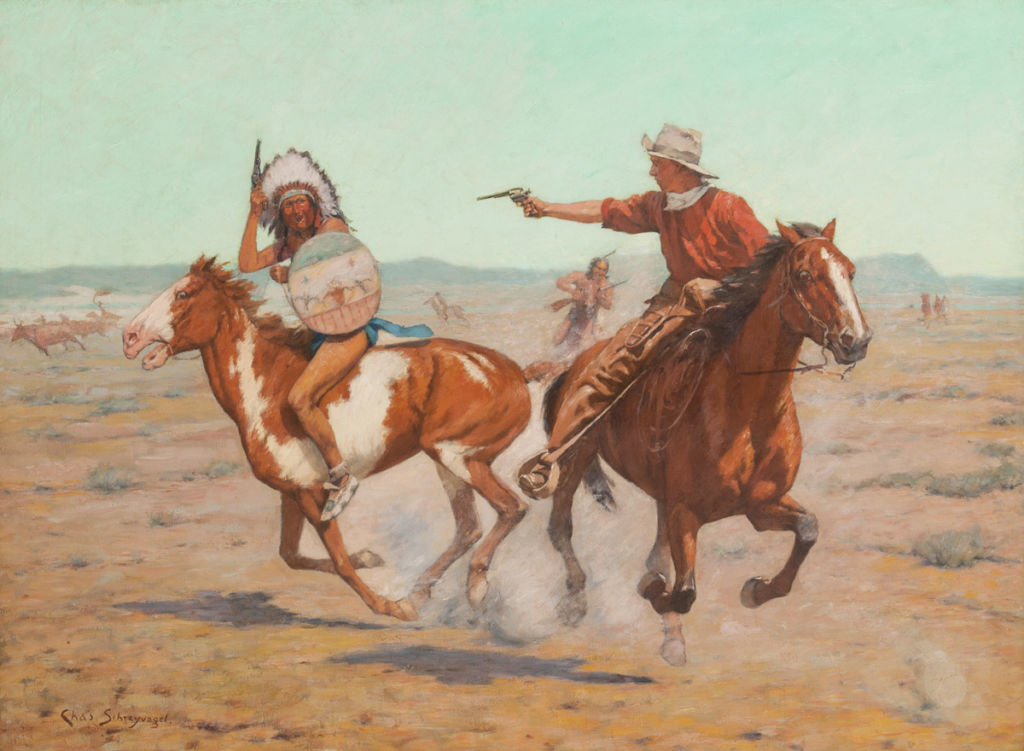
Charles Schreyvogel, Attack on the Herd (Close Call), c. 1907, Oil on canvas, 26 1/8 x 34 1/4 inches
Schreyvogel and his wife were frequent guests of Cody’s when the show was on the road, taking rides in the show arena in the famous Deadwood stage coach. In 1907, in an effort to refurbish Buffalo Bill’s image, Cody commissioned Schreyvogel to paint Rescue at Summit Springs, the Indian battle in which Cody had successfully taken part back in 1869. Charles Schreyvogel was one the most important artists whom Buffalo Bill patronized. As a token of their friendship, Cody gifted Schreyvogel a newly-made Sioux tepee, which would stand in the corner of Schreyvogel’s studio for many years and occasionally used as a model in paintings.
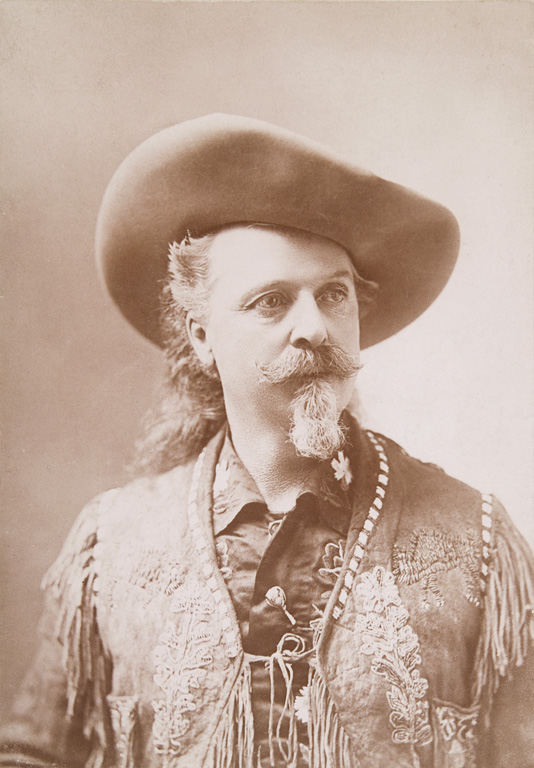
Stacy, Col. W. F. Cody “Buffalo Bill”, ca.1900, Collodion silver chloride print, Courtesy Amon Carter Museum of American Art, Fort Worth, Texas
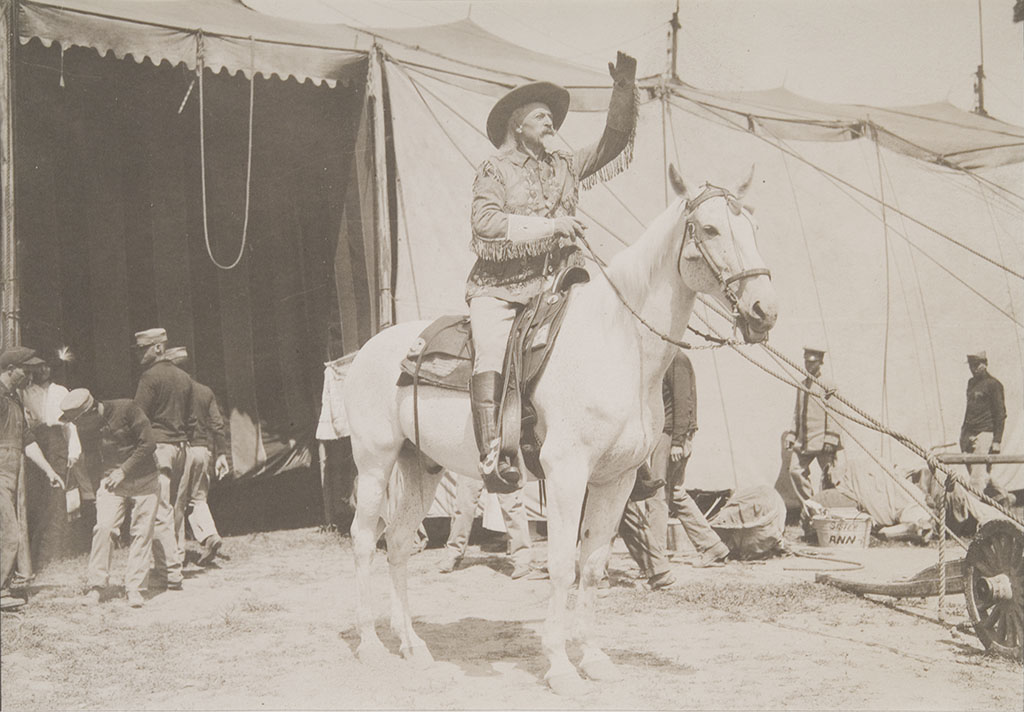
Unknown artist, [Buffalo Bill on horseback], ca.1900, Gelatin silver print, Courtesy Amon Carter Museum of American Art, Fort Worth, Texas
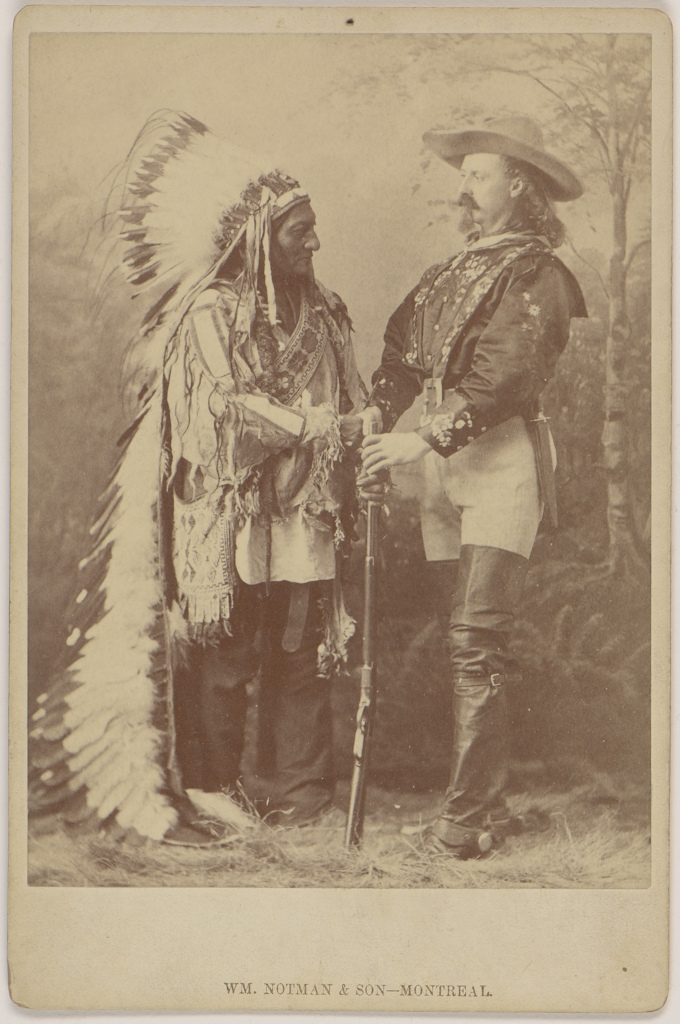
William Notman, [Sitting Bull and Buffalo Bill Cody], ca.1891, Albumen silver print, Courtesy Amon Carter Museum of American Art, Fort Worth, Texas

George Stacy, Buffalo Bill’s Wild West, ca.1890s, Halftone, Courtesy Amon Carter Museum of American Art, Fort Worth, Texas



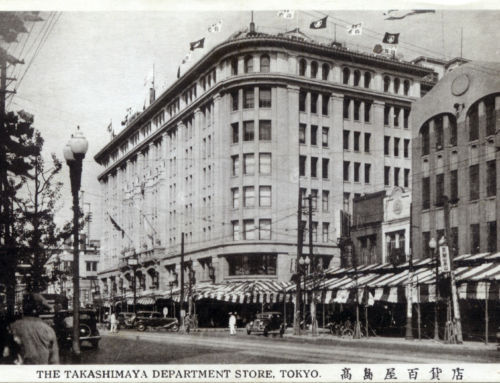
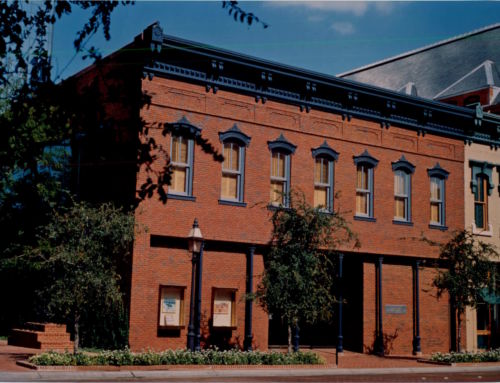
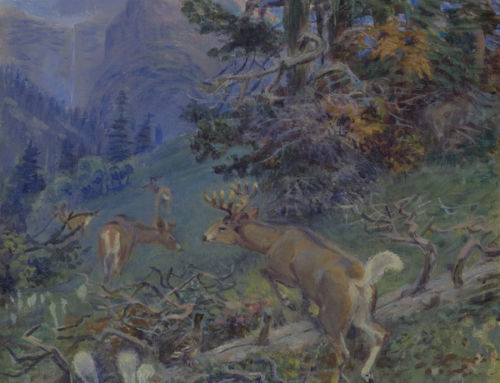
[…] when Americans and Europeans became intrigued with the rapidly disappearing Plains frontier. All Wild West Showmen shared a goal – to create popular entertainments that provide spectators an opportunity to […]